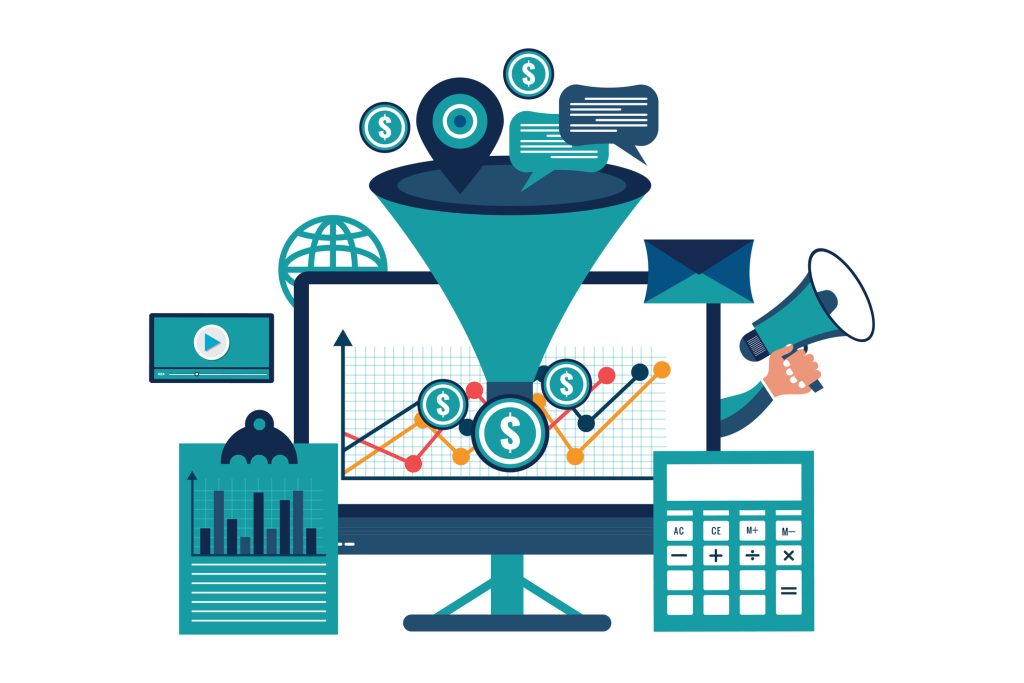
Digital marketing has come to rely on a new metric called conversion rates.
Ever heard of it? There’s no need to panic! A conversion strategy is your opportunity to turn site visitors into loyal customers.
Keep reading to learn about what conversion rates are and 5 ways to utilize them to take your business to the next level.
What Are Conversion Rates?
In the world of digital marketing, a conversion rate is the percentage of people who visit your site and complete the desired action. These types of desired actions include joining a mailing list, signing up for a service, or purchasing something from your company.
Conversion rates can happen all over your website so in order to optimize your site traffic, make sure you optimize each potential location. For example, on your homepage, landing page, pricing page and even pop-ups. Don’t waste precious potential without realizing it!
Now you may be wondering, what is a good conversion rate? Good conversion rates, like most marketing metrics, are subjective to the industry and specific goals of the company setting them. For example, the average conversion rate of an e-commerce site in the food/beverage industry is 5.5%, but the hair care sector hovers around 3.5%.
The best way to know if you have a decent conversation rate is to look at your industry standards and benchmark your progress. You can do this by reaching out to contacts in your industry, or using sites that compile the data for you and update it annually to ensure you are up to date on the latest trends.

How to Calculate Conversion Rates
Now you may be asking, how do I calculate my conversion rates? Your conversion rate is calculated by diving the number of conversions by total visitors and then multiplying that number by 100. For example, if you wanted to calculate an email list opt-in you could use this formula. You would divide the number of email sign-ups by the total number of website visits and then multiply it by 100. To make it even simpler, if you had 500 people sign up, and 20,000 site visitors, your conversion rate would be 2.5%.
Why Are Conversion Rates Important?
There are two kinds of conversion rates: high and low. High conversion rates are most desired because it means that your site, offerings, or web design appeals to your target customers enough to convert them from passive browsing to taking action. A low conversion rate can signify that your design is outdated, your site is slow or the links on the site are broken, which can make people less trusting of your site as a whole.
But, remember, “good” conversion rates are subjective.
Conversion rates are important to your marketing strategy because it helps measure how your marketing efforts are performing. This is especially true when trying to hit targets. Low conversion rates can help reveal potential issues in your customer’s journey or experience with your website and save your company money by pointing out what is working and what can be improved for customers with a little more investment.
5 Ways to Improve Conversions
Conversion rates are important because they serve as a blueprint to measure your business’s success online. Now that you know all about what conversion rates are and why they are crucial to your business, here are our 5 best tips for improving conversions.
1. Use Strategic Implementation
The four areas most likely to benefit from conversion rate optimization (CRO) are your homepage, pricing page, blog, and landing pages.
Homepage: This is your first impression and first opportunity to grab the attention of site visitors. You can utilize a free sign-up button, chatbot or links to product information that solicits activity and engagement from your potential customer.
Pricing Page: Your pricing page provides make-or-break information for visitors. You can generate leads and new customers by offering price quotes in pop-up form or by sharing contact information for exclusive potential deals. By adding an opt-in for their email address, you can both improve your conversion rate and give the customer the relevant information they want. Additionally, you now have the means to communicate with your leads that aren’t fully reliant on them returning to your site.
Blogs: Blogs like this one can offer your visitors industry expert knowledge and can convert readers into new leads. You can even utilize a call to action (CTA), that invites the reader to insider knowledge being sent right to their email.
Landing Pages: These pages have the highest average conversion rate of all signup forms at 23%. You can convert your target audience by having them sign up through an optimized form or by offering a free, downloadable resource for your audience to utilize while capturing their contact information for future incentives.
2. Improve Site Navigation
One of the biggest reasons for low conversion rates is difficulty navigating the website. Conversion-focused marketing plans put an emphasis on making the user’s experience on your website or app, as easy as possible. You can make sure your pop-ups provide value and are not distracting from the messaging of your site. You can also use analysis tools, like heat maps and A/B testing, to ensure your site is as easy to navigate as possible.

Site navigation can also improve accessibility for those who are handicapped. In fact, if you ignore user experience completely, you can lose up to 88% of your online shoppers, so it is very important to make sure your site flow and design are as smooth as possible.
3. Utilize The Conversion Funnel
The conversion funnel, also known as the sales funnel is a marketing tool that helps you understand the flow your potential customer goes through. It starts when potential customers land on your site all the way to the conversion point, hence why it is depicted as a narrowing funnel.
The three components of a conversion funnel are discovery, consideration and conversion.
Discovery: This stage describes all the people who visit your site and discovered your business.
Consideration: This is where a lead turns into a prospect and the visitor begins to learn more about the brand with potential interest.
Conversion: Finally, this stage is where the visitor decides whether or not to convert into a customer. At this point, they know the business and the offerings, and they now have the chance to engage and become a loyal customer.
This is a great illustration of how you can map the journey you want to take your customers on. By having set goals and structure, like the funnel, you can make sure your company and site align for site conversion optimization.
4. Promote Through Social Media
Social media is vital to digital marketers. Utilizing social media ads can help convert potential customers with a budget that is comfortable for you. When designing social media ads, you want to make sure they have a strong visual and structural relationship to your brand. This sense of continuity grows brand recognition and when users see your ads and arrive on your landing page, they are primed to take action on your site.
You can also use influencers to boost your social media conversions. Most influencers know how to manage the platform for their own brand growth, so why not let them leverage that for you? When you align your business with influencers who match your brand message, you create a sense of trust from the conversions they bring in.
5. Try Google Optimize
Google Optimize by Google Analytics can help businesses analyze their website and boost conversions. They do this by connecting experiments with AdWords, keyword optimization, accounts and page organization to tell you the best way to organize your site for maximum customers. They are able to do this through a series of tests: geographic location, exact-matched searchers, and cutting down on texts.
Geographic Location: Optimize segments which advertising methods work best in certain geographic locations. This method shows if a different language is spoken in one area. Then, your business can translate your ads to fit your demographic.
Exact-Matched Searchers: This refers to tailoring your messages depending on how the user wound up on your site. For example, if they used exact match keywords or just a close phrase. Exact-matched keywords can tailor more specific needs to the user since they know what they are looking for as opposed to someone who might not match what your company offers.